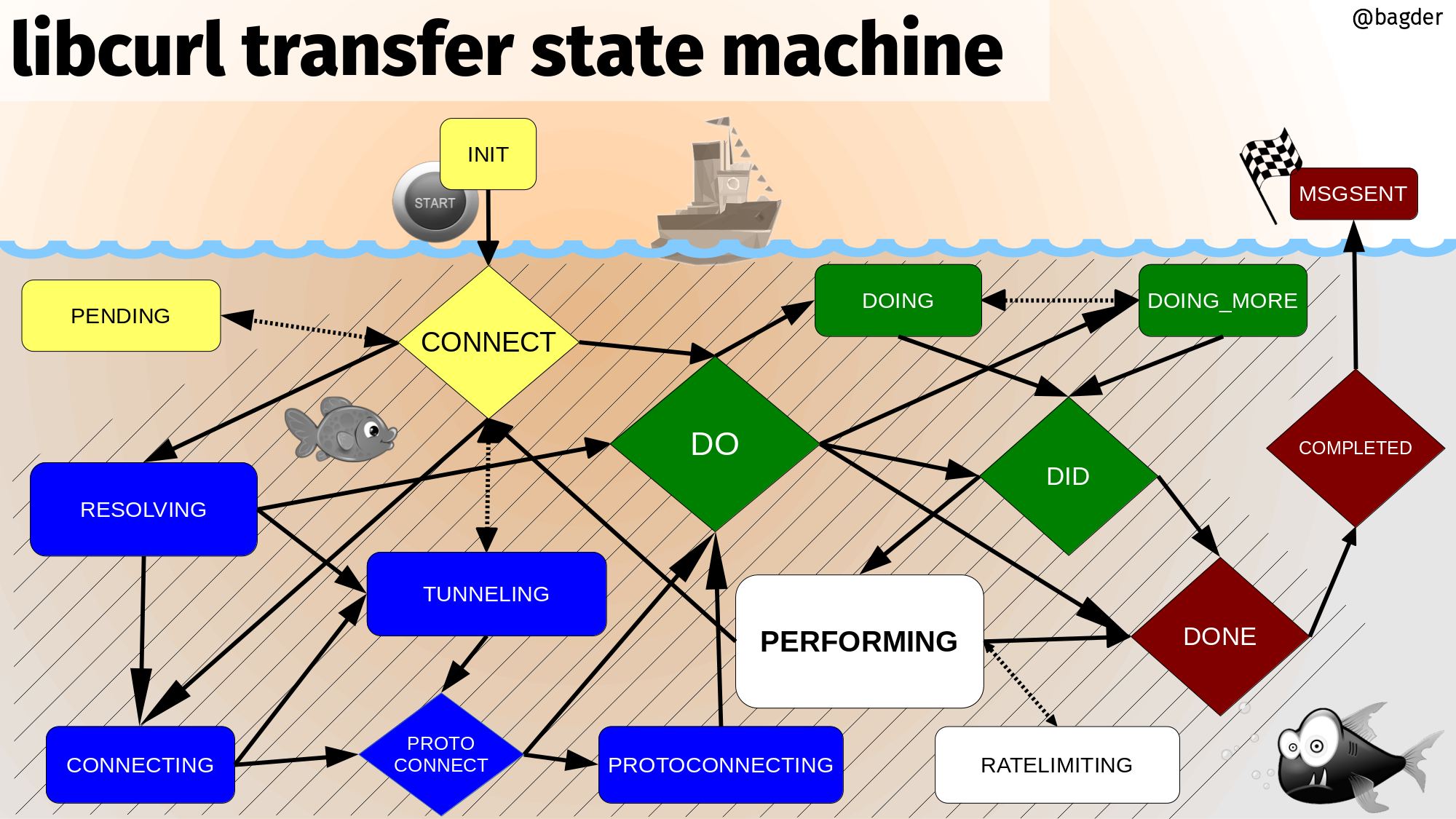State machines
To facilitate non-blocking behavior all through, the curl source is full of state machines. Work on as much data as there is and drive the state machine to where it can go based on what's available and allow the functions to continue from that point later on when more data arrives that then might drive the state machine further.
There are such states in many different levels for a given transfer and the code for each particular protocol may have its own set of state machines.
mstate
One of the primary states is the main transfer "mode" the easy handle holds,
which says if the current transfer is resolving, waiting for a resolve,
connecting, waiting for a connect, issuing a request, doing a transfer etc
(see the CURLMstate enum in lib/multihandle.h). Every transfer done with
libcurl has an associated easy handle and every easy handle exercises that
state machine.
The image below shows all states and possible state transitions. See further explanation below.

All transfers start in INIT and they end in MSGSENT
yellow: the initial setting-up states
blue: resolving names and setting up the connection
green: initiating and setting up the transfer
white: the transfer
red: post-transfer